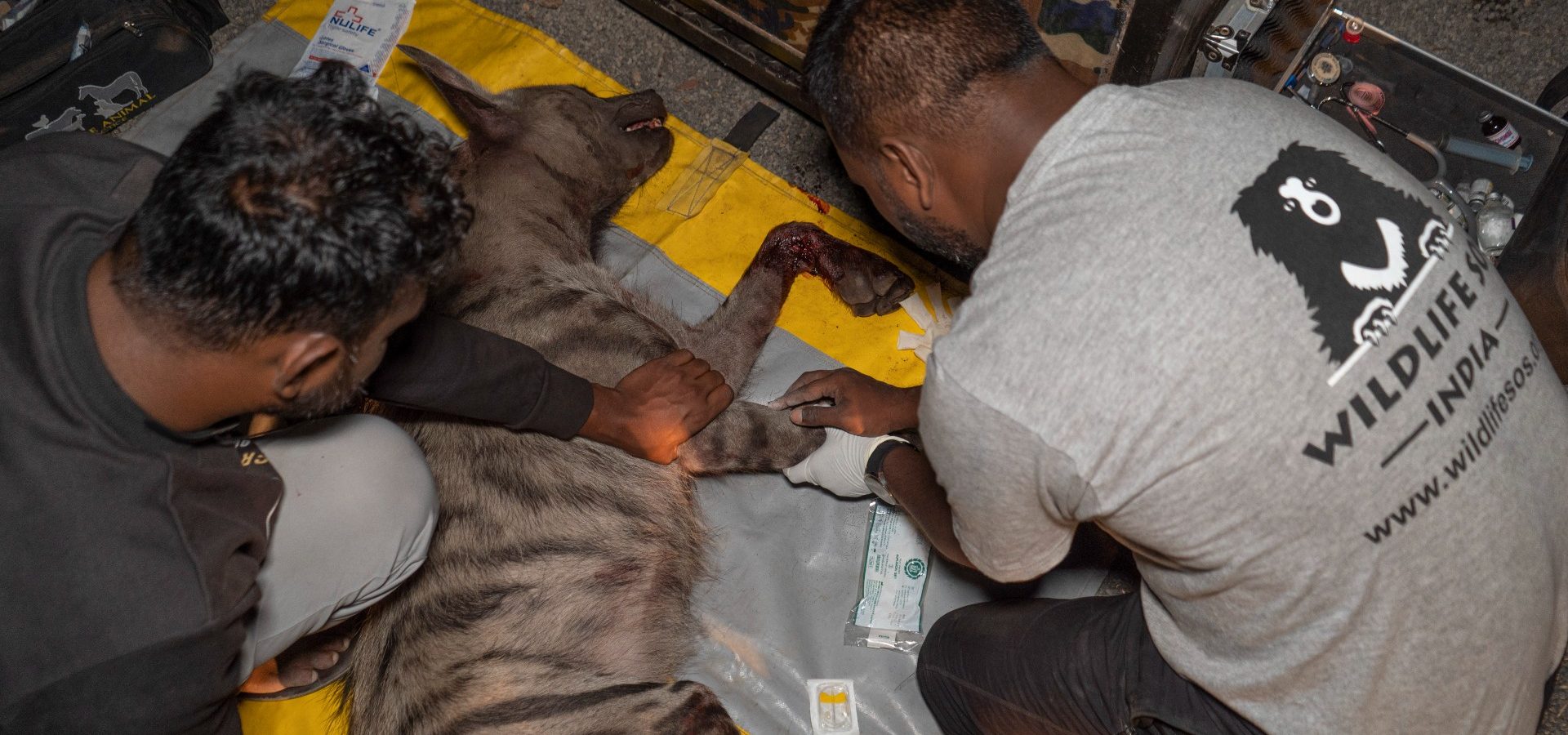Another day, and another wild animal becomes a victim of linear infrastructure. With roads cutting through natural landscapes, a Striped hyena recently had a close brush with death after getting hit by a speeding vehicle. The unfortunate incident occurred on the Pune-Nashik highway in Manchar Forest Range located in Ambegaon taluka of Pune district, Maharashtra.
The animal was left grievously injured and was spotted by locals on the side of the highway. They immediately alerted the Forest Department and a team of officers carefully transferred the injured hyena to the nearest Forest Range office. Responding to the urgent situation, the Wildlife SOS team operating out of the Manikdoh Leopard Rescue Centre (MLRC) instantly rushed to the spot to provide urgent medical assistance.
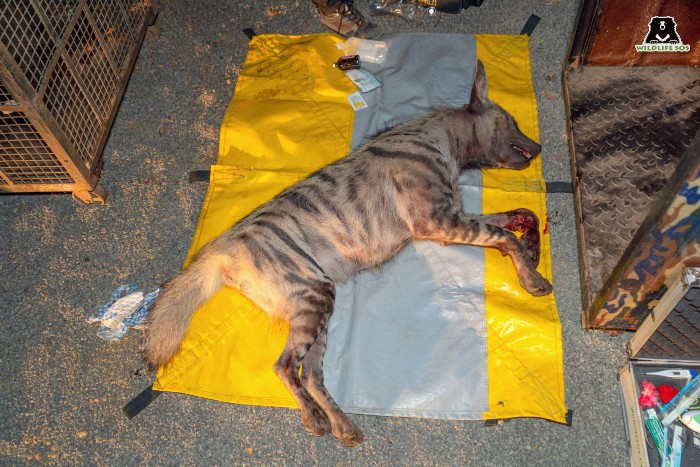
Geared with the necessary rescue equipment and medical amenities, the rescue team travelled through the night’s darkness to provide aid to the distressed animal. Upon arrival, Wildlife SOS veterinary officer Dr. Nikhil Bangar carried out on-site treatment with anti-inflammatory medication. On closer inspection, it was found out that the hyena was a male, aged 7-8 years old. It was revealed that the animal sustained injuries on its head, shoulders and legs, and was placed under intensive care at the Manikdoh Leopard Rescue Centre, jointly run by Wildlife SOS and the Forest Department.
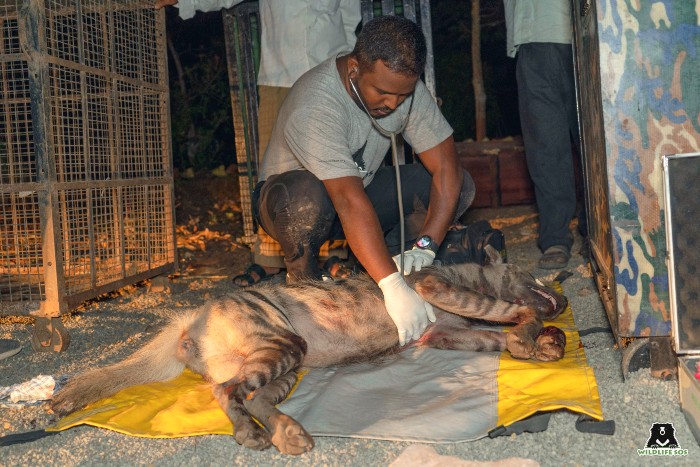
For now, fluid therapy has been provided (since the animal had lost a lot of blood), in addition to antibiotics and wound management. On conducting further examinations, it was found that the hyena has a mandibular symphysis fracture, also known as fracture of the jaw. Following the diagnosis, Wildlife SOS Veterinary Officer Dr. Nikhil Bangar performed a surgery on the lower jaw. Currently, the animal is stable post the surgery that our veterinary team has conducted but further observation needs to be done. The team is giving the animal more time to recuperate from the stressful ordeal; he will continue to be treated at MLRC until he recovers.
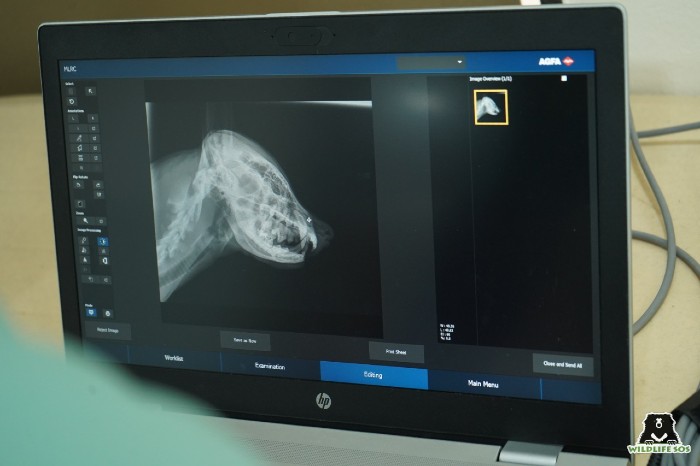
The striped hyena found in the Indian subcontinent comprises 20% of the hyena population in the world and is protected under Schedule III of the Wildlife (Protection) Act, 1972. Increased anthropogenic pressures have led to a sharp population decline (<10,000). Encroachment of their natural habitat and shortage of food sources force them to venture into human settlements. This often leads to fatal accidents at the hands of human-wildlife conflict situations, or rail and road accidents.
To think that accidents like these are rare would be a mistake. Last year alone Wildlife SOS rescued three hyenas from rail and road accidents. Hit and run cases of wild animals are becoming recurrent with expanding cities; the natural habitat of wild animals is shrinking. Roads and railways act as obstacles to animal movement. It is not uncommon for us to receive rescue calls where a wild animal has been injured due to negligent or rash driving. Wildlife SOS has rescued animals in the past who have been the victim of such accidents and saved them from life-threatening situations.
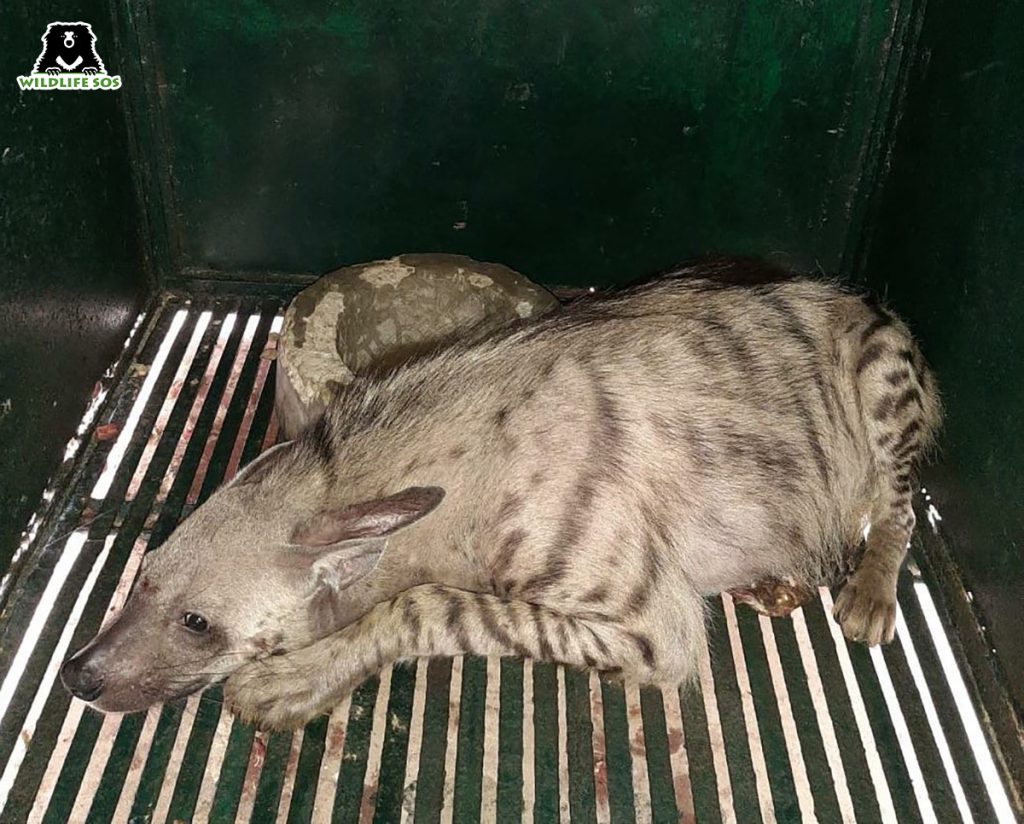
Taking these factors into account, we have to bear in mind that these numbers represent the number of lives lost due to unplanned urbanisation. It is therefore more than imperative to create safe passages such as wildlife corridors, study a region’s spatial or road ecology, and increase green cover to prevent such tragedies from happening.
On an individual level, one can take steps just by driving carefully. Following basic steps such as keeping the headlights on while driving at night, and asking your co-passenger to be vigilant can be helpful. Looking out for sign boards which suggest the presence of wild animals, and slowing down the car can save a life. Another way to help is to become a monthly donor and support rescue operations done by Wildlife SOS.

